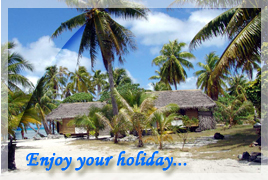

- Rajasthan
- Kerala
- Maharastra
- Tamilnadu



 City : Leh
City : LehLocation : North India
Language : Hindi
Know About Leh
Leh was the capital of the Himalayan kingdom of Ladakh, now the Leh District in the state of Jammu and Kashmir, India. The town is still dominated by the now ruined Leh Palace, former home of the royal family of Ladakh, which resembles a mini-Potala Palace. Leh is at an altitude of 3,500 meters (11,483ft).
Leh is the land of Lamas, the Buddhist Monks and is mainly populated by Buddhists and Hindus. Leh houses numerous Buddhist monuments, monasteries and study centers, Shnati stupa and Sankar Gompa are some of them.
Leh has grown to a best trade centre in Central Asia, with many trading opportunities for the motivated and dedicated young traders and achievers. Shopping is an experience in Leh. One can spot many traders in the city selling out spectacular Tibetal motifs and jewellery, winter woolen clothes and decorated world famous carpets.
Feasting of the eyes is assured in Leh with the imposing pristine beauty of the snow capped Himalayan ranges in the backdrop. Tourists throng to this place during the month of August when the annual tourist festival is conducted. The festival is an eye catching and breathe taking event. The adventurous tourists are invited to take up trekking in the challenging undulated Himalayan terrains.
Leh is the land of Lamas, the Buddhist Monks and is mainly populated by Buddhists and Hindus. Leh houses numerous Buddhist monuments, monasteries and study centers, Shnati stupa and Sankar Gompa are some of them.
Leh has grown to a best trade centre in Central Asia, with many trading opportunities for the motivated and dedicated young traders and achievers. Shopping is an experience in Leh. One can spot many traders in the city selling out spectacular Tibetal motifs and jewellery, winter woolen clothes and decorated world famous carpets.
Feasting of the eyes is assured in Leh with the imposing pristine beauty of the snow capped Himalayan ranges in the backdrop. Tourists throng to this place during the month of August when the annual tourist festival is conducted. The festival is an eye catching and breathe taking event. The adventurous tourists are invited to take up trekking in the challenging undulated Himalayan terrains.
History
The ruined Royal Palace at Leh.The town is dominated by the royal palace, known as Leh Palace. This was built by King Sengge Namgyal in the 17th century, but was later abandoned when Kashmiri forces besieged it in the mid-19th century. The royal family moved their premises south to their current home in Stok Palace on the southern bank of the Indus. The Leh Palace is nine storeys high; the upper floors accommodated the royal family, the stables and store rooms are located in the lower floors.
The city-square in 1909.The old mosque below Leh Palace is a Sunni Muslim mosque. It was constructed under the threat of military action[citation needed] by the Mughal Emperor Aurangzeb which prompted King Deldan Namgyal to build the mosque in 1661. The mosque reflects a mixture of Islamic and Tibetan architecture and can accommodate more than 500 people. Leh was an important stopover on trade routes along the Indus Valley between Tibet to the east, Kashmir to the west and ultimately between India and China.
The city-square in 1909.The old mosque below Leh Palace is a Sunni Muslim mosque. It was constructed under the threat of military action[citation needed] by the Mughal Emperor Aurangzeb which prompted King Deldan Namgyal to build the mosque in 1661. The mosque reflects a mixture of Islamic and Tibetan architecture and can accommodate more than 500 people. Leh was an important stopover on trade routes along the Indus Valley between Tibet to the east, Kashmir to the west and ultimately between India and China.
Geography
Leh is located at 34.17° N 77.58° E. Its average elevation is 3,500 metres (11,483 feet). Average annual rainfall is 90 mm. The temperature can range from -28 °C in winter to 33 °C in summer.
Principal roads include the 434 km Srinagar-Leh highway which connects Leh with Srinagar and the 473 km Leh-Manali Highway which connects Manali with Leh. Both roads are open only on a seasonal basis.
Principal roads include the 434 km Srinagar-Leh highway which connects Leh with Srinagar and the 473 km Leh-Manali Highway which connects Manali with Leh. Both roads are open only on a seasonal basis.







